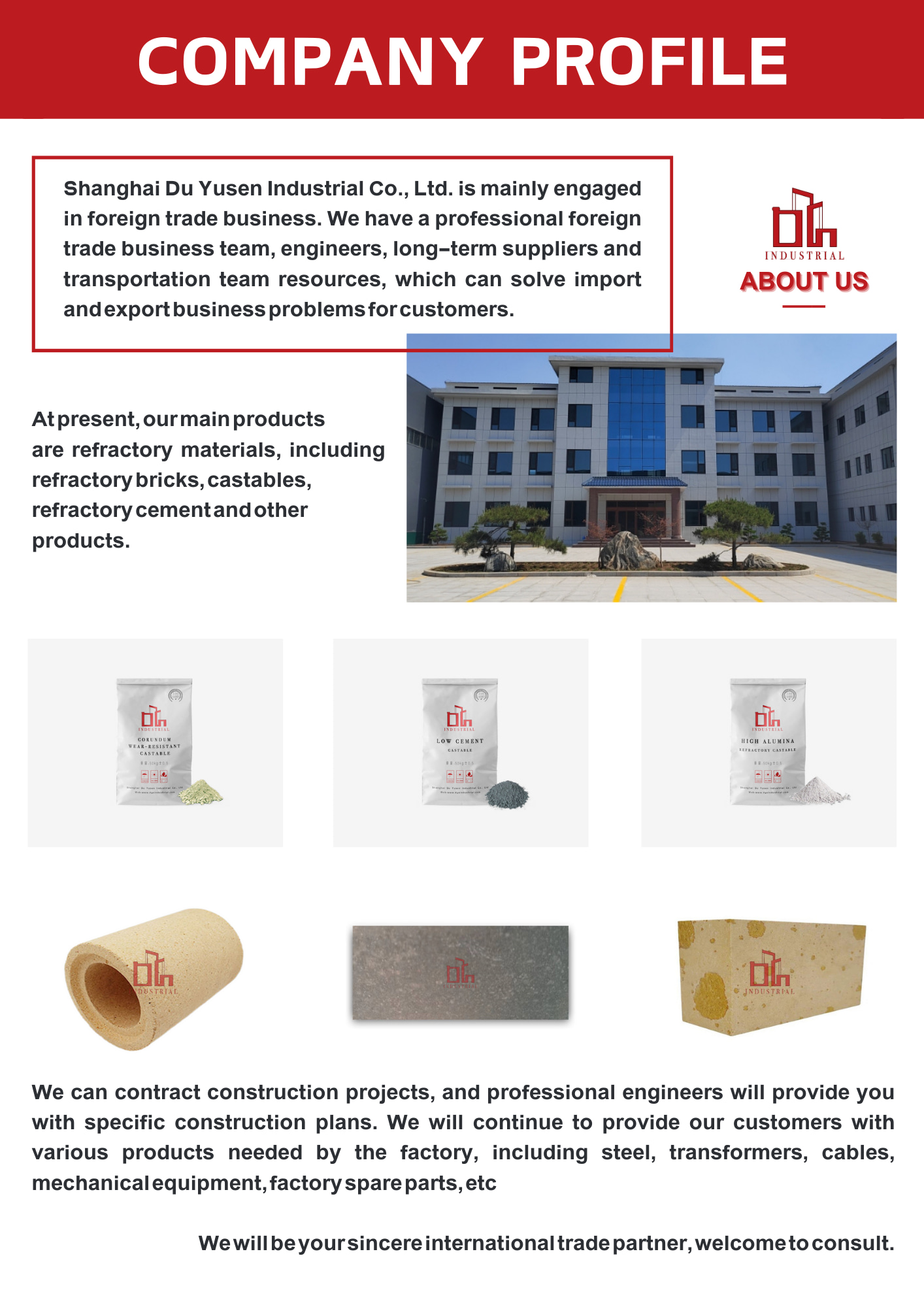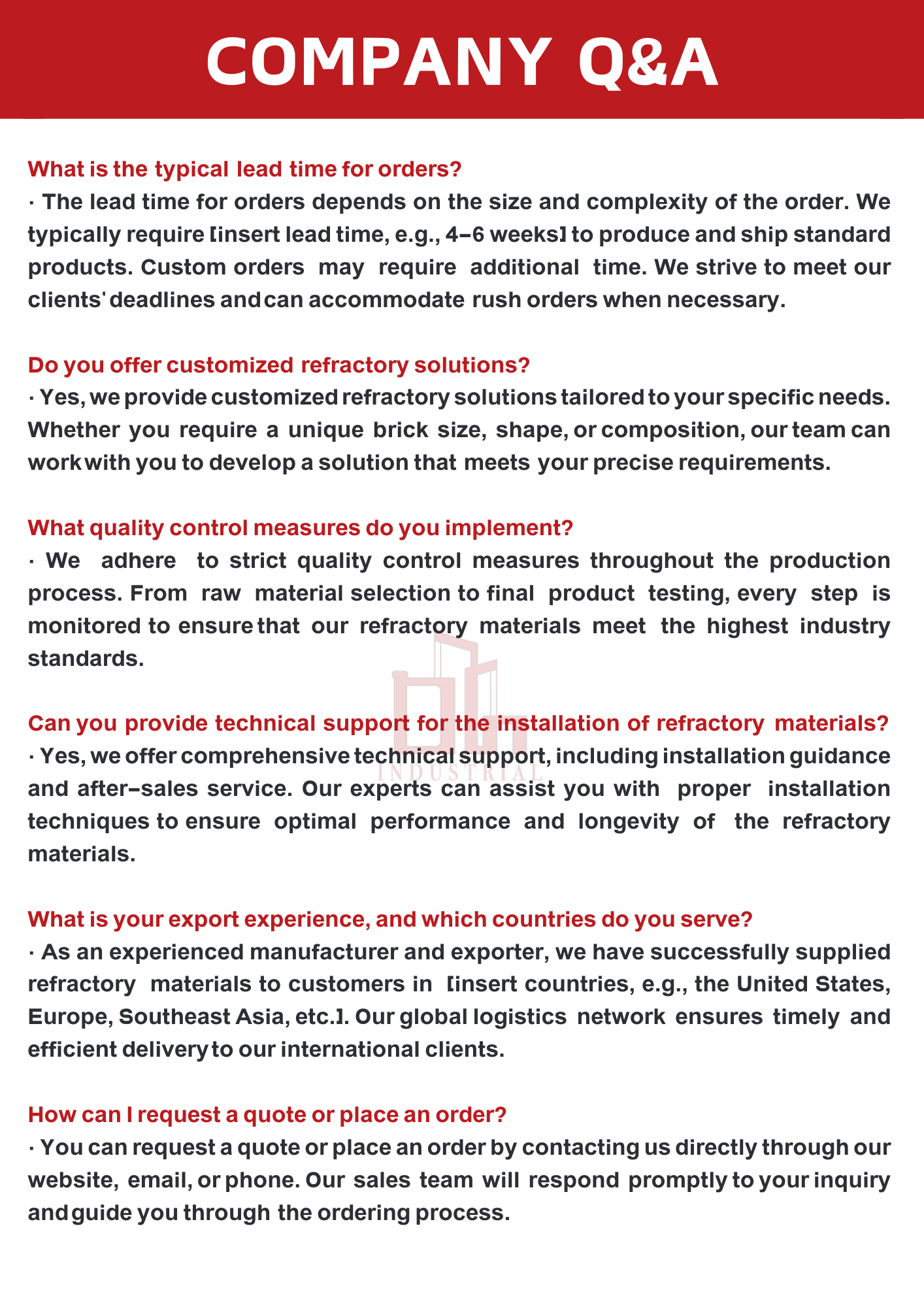Magnesia carbon bricks are made of high melting point alkaline oxide magnesium oxide (melting point 2800°C) and high melting point carbon materials that are difficult to be wetted by slag as raw materials, and various non-oxide additives are added. Non-burning carbon composite refractory material combined with carbon binder. Magnesia carbon bricks are mainly used for the lining of converters, AC electric arc furnaces, DC electric arc furnaces, and the slag lines of ladles.
As a composite refractory material, magnesia-carbon bricks effectively utilize the strong resistance to slag erosion of magnesia and the high thermal conductivity and low expansion of carbon, compensating for the biggest shortcoming of magnesia's poor spalling resistance.
Payment :
In AdvanceProduct Origin :
ChinaShipping Port :
Shanghai PortLead Time :
15 Working daysProduct parameters:
| Type | Apparent Porosity % ≤ | Bulk Density g/cm³ | Cold Crushing Strength MPa ≥ | MgO % ≥ | C ≥ |
| DYSMT-5A | 5 | 3.15±0.08 | 50 | 85 | 5 |
| DYSMT-5B | 6 | 3.10±0.08 | 50 | 84 | 5 |
| DYSMT-5C | 7 | 3.00±0.08 | 45 | 82 | 5 |
| DYSMT-8A | 4.5 | 3.12±0.08 | 45 | 82 | 8 |
| DYSMT-8B | 5 | 3.08±0.08 | 45 | 81 | 8 |
| DYSMT-8C | 6 | 2.98±0.08 | 40 | 79 | 8 |
| DYSMT-10A | 4 | 3.10±0.08 | 40 | 80 | 10 |
| DYSMT-10B | 4.5 | 3.05±0.08 | 40 | 79 | 10 |
| DYSMT-10C | 5 | 3.00±0.08 | 35 | 77 | 10 |
| DYSMT-12A | 4 | 3.05±0.08 | 40 | 78 | 12 |
| DYSMT-12B | 4 | 3.02±0.08 | 35 | 77 | 12 |
| DYSMT-12C | 4.5 | 3.00±0.08 | 35 | 75 | 12 |
| DYSMT-14A | 3.5 | 3.03±0.08 | 40 | 76 | 14 |
| DYSMT-14B | 3.5 | 2.98±0.08 | 35 | 74 | 14 |
| DYSMT-14C | 4 | 2.95±0.08 | 35 | 75 | 14 |
| DYSMT-16A | 3.5 | 3.00±0.08 | 35 | 74 | 16 |
| DYSMT-16B | 3.5 | 2.95±0.08 | 35 | 72 | 16 |
| DYSMT-16C | 4 | 2.90±0.08 | 30 | 70 | 16 |
| DYSMT-18A | 3 | 2.97±0.08 | 35 | 72 | 18 |
| DYSMT-18B | 3.5 | 2.92±0.08 | 30 | 70 | 18 |
| DYSMT-18C | 4 | 2.87±0.08 | 30 | 69 | 18 |
Feature:
Application of Magnesia Carbon Brick
Magnesia Carbon Bricks, also known as MgO-C bricks, are widely used in various high-temperature industrial applications due to their excellent properties and performance. These bricks are made by combining high-purity magnesia and high-quality graphite, which results in a material that is resistant to high temperatures, chemical erosion, and thermal shock.
1. Steel Industry: One of the primary applications of Magnesia Carbon Bricks is in the steel industry, particularly in steelmaking converters, electric arc furnaces (EAFs), and ladles. These bricks are used in the lining of these equipment due to their outstanding resistance to high temperatures and slag corrosion. The high carbon content in the bricks provides good thermal conductivity and excellent resistance to oxidation, making them well-suited for these demanding steelmaking processes.
2. Non-Ferrous Metal Industry: Magnesia Carbon Bricks also find applications in the non-ferrous metal industry, including copper smelting, nickel refining, and aluminum production. These bricks are used in the linings of furnaces and converters to withstand the extreme temperatures and corrosive environments encountered during the melting and refining processes.
3. Cement Industry: The cement industry relies on Magnesia Carbon Bricks for the construction of rotary kilns and other high-temperature equipment. These bricks offer excellent thermal shock resistance and have a low thermal expansion coefficient, allowing them to withstand the severe temperature changes and mechanical stress experienced in cement kilns.
4. Petrochemical Industry: In the petrochemical industry, Magnesia Carbon Bricks are used in various applications, such as in the cracking furnaces for ethylene production or in the reformer furnaces for hydrogen production. The bricks' resistance to high temperatures and chemical attack from aggressive gases and liquids make them an ideal choice for these harsh environments.
5. Incinerators and Waste-to-Energy Plants: Magnesia Carbon Bricks are also utilized in the linings of waste incinerators and waste-to-energy plants. These bricks can withstand the high temperatures and corrosive conditions generated during the combustion of waste materials and provide long-lasting performance in these critical applications.
Overall, the outstanding thermal, chemical, and mechanical properties of Magnesia Carbon Bricks make them highly suitable for a wide range of high-temperature applications in industries such as steel, non-ferrous metals, cement, petrochemicals, and waste management. Their durability, resistance to thermal shock, and erosion make them a reliable choice for lining materials in furnace and kiln constructions, contributing to the efficiency and longevity of industrial processes.



Tags :